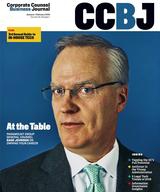Can the software giant reboot lawyer-client relations? The smart money says, “Maybe.”
Many CCBJ readers have by now heard about the Microsoft Trusted Advisor Forum. At a gathering on its Redmond campus on September 20, the immediate topic was innovation. But according to participants and observers, there is a broader agenda – and bigger ideas – in play. As laid out last summer in an essay by David Howard, Corporate VP & Deputy GC, the headline goal is to move 90% of Microsoft’s legal work to AFAs in two years. The broader – moonshot – purpose is to reimagine and re-engineer inside-outside counsel relations in a profound and lasting way. Prof. William Henderson, who was invited to attend, was both euphoric at the possibilities and wary of the pitfalls. “Microsoft’s legal department has the talent, resources and vision,” Henderson wrote on his Legal Evolution blog. “With enough time, a ‘Microsoft system’ could evolve that will be as influential as the original Cravath system.”
Despite Microsoft’s efforts to create a “safe psychological space” for the participating law firms, it had to be a nerve-wracking scene. The 12 law firms and one Big 4 firm were asked to respond to two prompts crafted by industry consultant Casey Flaherty in front of an audience of some 150 competitors, Microsofters, and in-house representatives from other companies: tell us one way you have gotten better in the last year; and tell us one way you will get better in the next year.
Scary? You bet. Enough so that of the teams invited to participate, four declined, and of the 13 that did present, 6 chose not to address the retrospective prompt. Here’s how Flaherty set the stage: “A core premise of the Forum was that our current approach is broken – i.e., nebulous complaints from clients about failure to innovate . . . are insufficient to incent meaningful action. Lack of specificity and accountability create ambiguity for consensus-driven organizations (law firms) where collective decision making defaults to stasis.”
Handicapping the odds of long-term success, Henderson is surprisingly optimistic. “The Microsoft system has the potential to make this happen because the multiple iteration/repeat player design can slowly change the culture.” Even so, he warns, Microsoft leadership should not underestimate the resistance.
“When things get hard,” he says, “don’t mistake the hardships for a flaw in the underlying strategy . . . Stay the course until the end. Pay the price. The resulting Microsoft system will be worth it.”
Published January 11, 2019.






